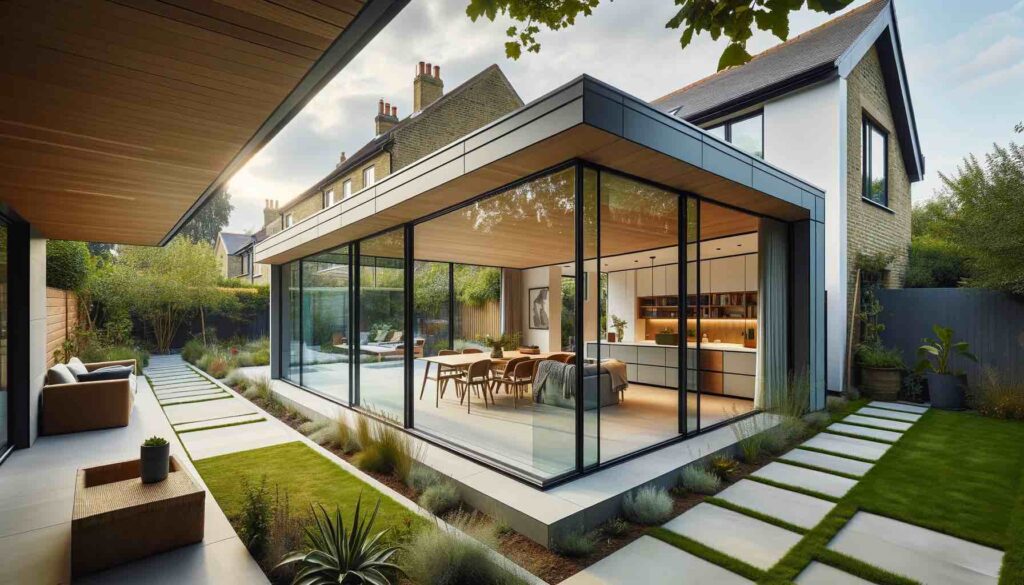Over thirteen yearsexperience in the industry
We can offer aMarket comparison
Accepted bymajority of high street banks
Recognised byUK Finance
The reduction in rates from the mortgage lenders has brought a cautionary optimism to the outlook for the housing market in 2024.
The Halifax announced a reduction of 0.83% for its 2, 5 and 10 year fixed rate products increasing to 0.92 per cent for existing customers.

The Halifax also confirmed it will be reducing its remortgage rates by up to 0.32% on selected 3-year fixed rates from Friday, 5th January 2024. This mid range fixed rate is not offered by many lenders and is often seen as good middle ground for those looking to remortgage.
All this activity looks likely to prompt other lenders to follow suit.
With inflation falling faster than expected pressure is on the Bank of England to reduce interest rates and encourage further falls in mortgage rates.
Competition amongst lenders is fierce with in a smaller market place – first time buyers with a mortgage fell to a 10-year-low of just 290,000 in 2023.
Despite market indicators still showing a negative trend, sales expectations are looking positive for the first time in three months with a rise of 6% expected and looking toward the future, a 24% increase in sales is forecast in the next twelve months, the most positive outlook since January 2022.
According to Rightmove the number of homes being listed by estate agents on Boxing Day 2023 has nearly tripled (+173%) since pre-pandemic 2019.
Although house prices still look set to continue in decline the rate of decline is slowing.
According to Simon Rubinsohn, RICS chief economist, “The latest RICS Residential Market Survey provides further evidence that sentiment is a little less negative than previously was the case with, critically, the new buyers enquiries indicator finally beginning to stabilise.
“This is being aided by increased confidence that the interest rate cycle has peaked which is reflected in somewhat more competitive mortgage products coming to the market.
“However, with the cost of money likely to remain elevated for some time to come and the economic outlook still downbeat, it is not surprising that the overall tone to the anecdotal remarks from survey respondents is still quite cautious.”
Granite Building Warranties are specialist independent brokers of building warranties for the construction industry and for a quote or further information please contact Ed or Kelly on Tel: 01284 365345 or email ed@granitebw.co.uk / kelly@granitebw.co.uk
Blue Chip Developers Will Fall Short of Building Targets in 2024
- Forecasts from Peel Hunt show the 10 stock market listed developers are expected to build only 69,300 new residential dwellings in 2024.
- This falls far below the 85,000 completed in 2022 and is still less than the 71,000 completed in 2023.
- This significant reduction seriously jeopardises Government targets of 300,000 new homes being built each year by all developers by mid-2020’s.
- Companies blame withdrawal of Help to Buy, planning red tape, Brexit and lack of skilled labour as significant reasons for lack of homes being built – the environment is increasingly anti-development.
- Other causes for the shortfall include cost of living crisis, mortgage rate rises, falling house prices and shortage of housing stock.
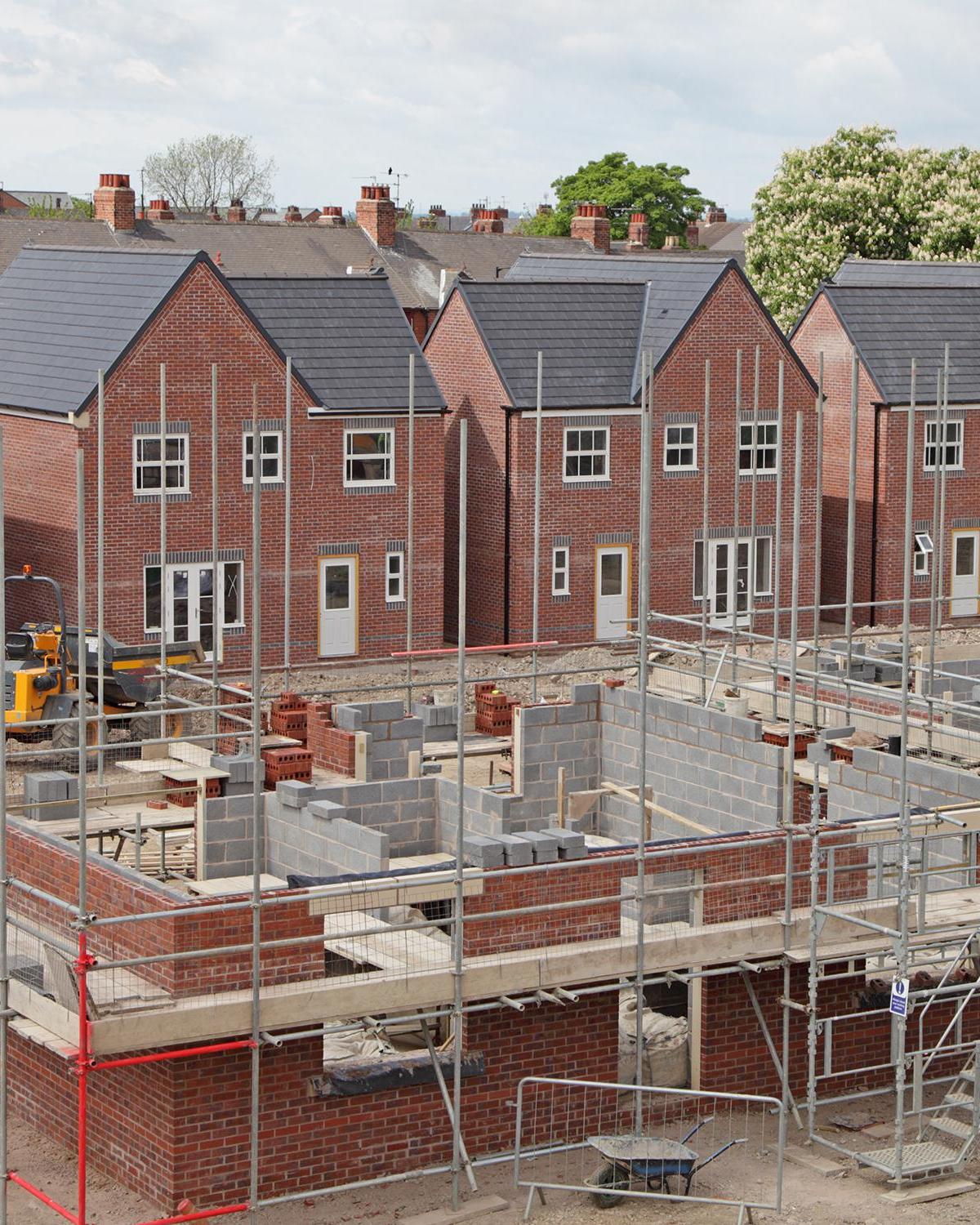
Granite Building Warranties are specialist independent brokers of building warranties for the construction industry and for a quote or further information please contact Ed or Kelly on Tel: 01284 365345 or email ed@granitebw.co.uk / kelly@granitebw.co.uk
Loft conversions – do they still make financial sense?
When looking to increase space in your home one of the most popular choices has often been to go upwards into the loft, but with soaring building and timber costs does this still represent value for money?
Average building costs are around £250-£300/sq ft so a couple of bedrooms and a bathroom could cost around £120,000 but could add around £150,000 to the value of the home thereby making this a good investment.
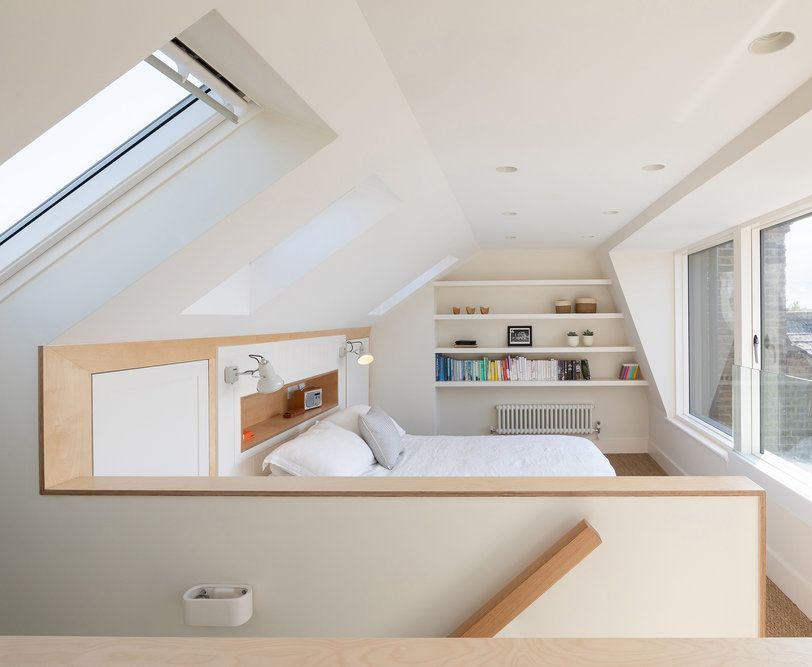
Adding an extra bedroom and bathroom to a smaller house will be more likely to increase its value as you are widening its appeal to a larger market sector. However, adding too many bedrooms and having not enough living space to accommodate everyone or ending up with an unbalanced home or overdeveloped plot will not be attractive to buyers, even if it works for you.
In the current market, with falling house prices, a loft conversion in some areas is unlikely to add value in the short term but stay put for a few years and a well-balanced conversion is likely to give you a good return on your investment.
As is the case with all significant building projects, you will need a structural warranty. Please contact Granite Building Warranties are specialist independent brokers of building warranties for the construction industry and for a quote or further information please contact Ed or Kelly on Tel: 01284 365345 or email ed@granitebw.co.uk / kelly@granitebw.co.uk
Your basement transformation journey has reached its exciting final phase! With the construction complete, it’s time to bring your vision to life by equipping this newfound space with all the essentials. From cosy furnishings and innovative lighting to the latest in insulation and heating solutions, we’re here to guide you through the finishing touches that will turn your basement into a functional, comfortable, and vibrant extension of your home
Optimising Basement Flooring
Consider your options carefully if dealing with an uneven basement floor. A standard solution is adding screeds, or concrete layers, atop the floor slab. Screeds offer a solid base for various finishes but can increase floor height. Alternatively, floating timber floors, constructed from tongue and groove boards over a waterproof membrane and insulation, offer a practical solution. Incorporate underfloor heating for added comfort and efficiency.
Insulating Your Basement for Comfort and Efficiency
Insulation is key to a welcoming, energy-efficient basement. Focus on interior wall insulation, as exterior insulation is typically part of the initial construction process. Affordable options include:
- Blanket Insulation: Fiberglass insulation with a vapour barrier, but beware of moisture sensitivity.
- Foam Board Insulation: Excellent for water resistance, attaches well to cavity drainage membranes.
- Loose-fill Insulation: A cost-effective alternative.
- Sprayed Foam Insulation: Ideal for finished basements.
- Remember, proper vapour control is essential to prevent humidity and mould. Install a vapour control layer on the insulation’s warm side to stop condensation. Waterproofing systems are crucial to protect the insulation from water damage. Note the U values (lower values indicate better insulation) to gauge heat loss efficiency.
Ensuring Proper Ventilation
Proper ventilation is critical in basements to replace stale air and control humidity. Utilise windows, open staircases, extractor fans, and ventilation units effectively. Also ensure the basement is waterproof.
Basement Heating Options
A cosy basement needs adequate heating. Options include:
- Underfloor Heating: Efficient and evenly distributed; often installed in screeds.
- Radiators: A traditional heating choice.
- Electric and Oil Heaters: Good for short-term heating but consider cost-effectiveness.
Lighting Solutions for a Bright Basement
Basements often lack natural light, so creative lighting is essential. Avoid pendant lights in low-ceiling basements, opting instead for:
- Recessed Miniature Spotlights: Ideal for low ceilings.
- Spotlights and Track Lighting: Attach to ceiling beams for focused illumination.
- Wall Sconces: For ambient light.
- Maximise natural light by keeping windows unobstructed. Consider installing or enlarging windows or adding a lightwell, subject to planning permissions. Glass doors and innovative options like mirror shafts can also introduce more light.
- Natural Light: Basements often have limited natural light. If your basement has windows, maximize this natural light. Consider using light window treatments and strategically placing mirrors to reflect natural light.
- Artificial Lighting Types:
- Ambient Lighting: This is the general, overall light in the room. Recessed lighting, flush-mount ceiling fixtures, or even wall sconces can provide good ambient light.
- Task Lighting: For areas where specific activities occur (like reading, working, or playing games), additional lighting like table lamps, floor lamps, or under-cabinet lights can be used.
- Accent Lighting: This is used to highlight architectural features, artwork, or other points of interest. Track lighting or spotlights can be effective for this purpose.
- Ceiling Height: Lower ceilings in basements may not accommodate certain types of fixtures. Flush-mount or recessed lighting can be a good choice in these areas.
- Color Temperature: Warmer light (2700K to 3000K) often works well in basements to create a cozy and inviting atmosphere. Cooler light might be preferred in work or utility areas.
- Energy Efficiency: LED lighting is a popular choice for basements due to its energy efficiency and long lifespan. It also produces less heat, which is a plus in a confined space.
- Brightness: Basements often need more light than other rooms due to the lack of natural light. Ensure your lighting plan includes enough lumens to adequately brighten the space.
- Flexibility: Dimmer switches can be a great addition to control the lighting mood and intensity. Adjustable lights or track lighting offer flexibility to change the direction of light as needed.
- Safety and Building Codes: Make sure your lighting plan complies with local building codes, especially regarding electrical wiring and fixture installation.
- Decor and Style: The lighting should complement the overall decor and style of your basement. Choose fixtures that enhance the aesthetic you’re aiming for, whether it’s modern, rustic, industrial, etc.
- Budget: Consider the cost not just of the fixtures themselves, but also of installation and long-term energy usage.
Enhanced Guide Elements:
- Soundproofing: Incorporate acoustic insulation if the basement is used for noise-related activities.
- Safety Features: Ensure emergency exits meet building codes. Install smoke and carbon monoxide detectors.
- Wall and Ceiling Finishes: Use moisture-resistant materials for walls and ceilings. A drop ceiling can offer easy access to utilities.
- Window Treatments: Light-filtering treatments provide privacy and natural light.
- Furnishings: Opt for space-efficient furniture, especially in smaller basements.
- Wi-Fi and Technology: Consider Wi-Fi extenders and smart home devices for enhanced connectivity and convenience.
- Compliance with Regulations: Adhere to local building codes, especially for egress windows and ceiling heights.
By enhancing your basement conversion guide with these additional considerations, you can create a space that is functional and comfortable but also safe and compliant with local regulations.
Transforming Basements into Dry, Welcoming Spaces: The Essentials of Waterproofing
Creating a Habitable and Dry Basement Space
The primary goal of basement conversions is to extend your living space into a welcoming and, most importantly, dry area. The key to achieving this lies in effective basement waterproofing.
Methods of Basement Waterproofing
The process of waterproofing a basement includes blocking water entry. It can be achieved through various techniques such as:
- External Waterproofing: This method is typically implemented during the basement’s construction and relies on moisture-resistant building materials. However, its effectiveness is often only thoroughly tested once the surrounding soil settles, potentially revealing flaws under hydrostatic pressure.
- Cementitious Tanking Involves applying a bonded waterproof cement layer to the basement’s walls, floors, and sometimes ceilings. This layer, adhering to the masonry, creates a barrier against water, allowing breathability.
- Cavity Drain Membranes: These membranes form a gap between the wet wall and the waterproof layer, guiding any water ingress to a sump and pump system for evacuation.
Best Practices for Waterproofing a Basement
The most effective waterproofing approach considers the basement’s intended use and combines various waterproofing systems. Each method has its strengths and should be tailored to suit specific conditions.
Preparing for Waterproofing
Before waterproofing, ensure to:
- Clear the basement of all items.
- Thoroughly clean the area, removing debris and dust.
- Inspect and repair any wall damage.
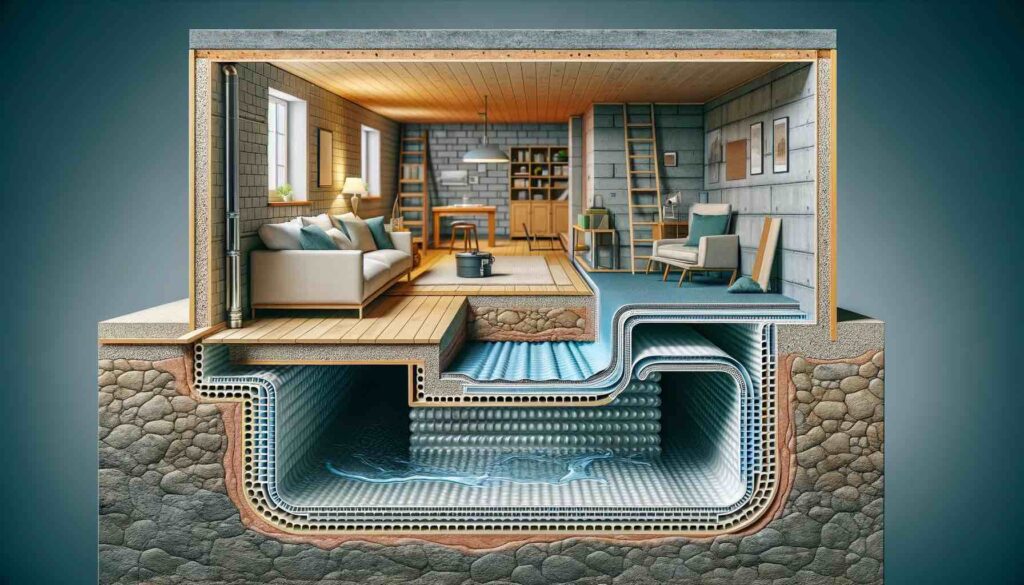 Choosing a Waterproofing Professional
Choosing a Waterproofing Professional
For optimal results, engage a professional specialising in basement waterproofing. Verify their credentials, focus on the guarantees offered, and consider if they are affiliated with organisations like the British Structural Waterproofing Association.
Enhancing Property Value with a Waterproof Basement
A waterproof basement prevents mould and rot and significantly increases property value. This added living space is particularly appealing in urban, high-value areas, especially London.
The Importance of BS8102 Compliance
All waterproofing systems should comply with the BS8102 guidelines. Familiarise yourself with these standards and the importance of sump pump maintenance and backup systems.
Waterproofing and Housing Considerations
A dry, welcoming basement property is more valuable and appealing to buyers than one with damp issues. Addressing waterproofing effectively can prevent long-term structural problems and make your property more attractive in the housing market.
Interior Drainage Systems
Interior drainage systems are crucial in basement waterproofing, especially in managing and redirecting water infiltration. Here’s an overview of how they work and why they are essential:
1. Functionality of Interior Drainage Systems:
- Interior drainage systems are designed to capture water that enters the basement, typically where the floor meets the walls, a common entry point for water.
- These systems consist of a drainage channel installed around the perimeter of the basement floor. The drain collects incoming water and directs it to a collection point, usually a sump pump.
2. Components of the System:
- Drainage Channel or Perimeter Drain: A trench is dug around the perimeter of the basement, and a drainage pipe or channel is installed. This pipe is perforated to allow water to enter and is often laid in a gravel bed to facilitate drainage.
- Sump Pump: The collected water is directed to a sump basin. When the water in this basin reaches a certain level, the sump pump activates and pumps the water out of the basement, typically discharging it away from the foundation.
- Vapour Barrier: Sometimes, a vapour barrier is also installed along the basement walls to direct wall seepage to the drainage channel.
3. Installation Process:
- Installing an interior drainage system typically involves some level of basement excavation. It may require the removal of a section of the basement floor along the perimeter and potentially the lower section of the basement walls.
- After installing the drainage channel and connecting it to the sump pump, the floor is restored, often with new concrete poured over the drainage system.
4. Advantages:
- Less Invasive: Compared to exterior waterproofing, interior drainage systems are less invasive and can be more cost-effective, as they don’t require excavating the entire outer perimeter of the house.
- Effective Water Management: They effectively manage water intrusion, redirecting it away from the basement living space.
- Reduced Hydrostatic Pressure: By capturing water at the point of entry, these systems help reduce hydrostatic pressure against the basement walls and floor, minimising the risk of structural damage.
5. Maintenance and Considerations:
- Regular maintenance of the sump pump and cleaning of the drainage channels is essential to ensure the system functions correctly.
- Battery backup systems for sump pumps are recommended to ensure functionality during power outages, which often accompany heavy storms.
6. Suitability and Limitations:
- Interior drainage systems are a practical solution for many basements but may only be suitable for some. Factors like the basement’s existing construction, soil conditions, and the water table level need to be considered.
- In cases of extreme flooding or severe foundational issues, additional waterproofing methods might be necessary.
Interior drainage systems offer an effective way to manage basement water issues, particularly with other waterproofing strategies. However, it’s crucial to assess each situation individually and consult with waterproofing professionals to determine the most appropriate solution for your basement needs. More on basement conversions.
Once the basement is waterproofed then it’s time to finish the basement.
For further information please contact Ed or Kelly on Tel: 01284 365345 or email ed@granitebw.co.uk / kelly@granitebw.co.uk.
Expanding your living space through home extensions is a popular way to adapt your home to changing needs in the dynamic housing market. Whether you’re looking for an extra bedroom, a larger kitchen, or just more living space, understanding the different types of home extensions and their specific requirements is crucial. This guide explores London’s most common types of home extensions, along with insights into insurance and warranty considerations for each.
1. Single-Story Extensions:
Ideal for ground or first-floor expansions, single-story extensions are a cost-effective way to add rooms like bedrooms, bathrooms, or additional living space. They are less complex and generally more budget-friendly.
Insurance and Warranty Considerations:
- Site Insurance: Essential during construction to protect against risks like theft, damage, or injury on site.
- Structural Defects Insurance: Important for new construction to cover any structural issues that may arise post-completion.
- Completed Housing Warranty/New Build Warranty: Applicable for new extensions as a guarantee against defects.
- Latent Defects Insurance: Provides coverage for hidden defects discovered after completion.
- Right-of-Lights Insurance: May be necessary if the extension could potentially block a neighbour’s natural light.
2. Two-Story Extensions:
A two-story extension adds considerable room for those needing substantial space by building an additional floor. Perfect for multiple new rooms or expanded living areas.
Insurance and Warranty Considerations:
- Site Insurance: Essential during construction to protect against risks like theft, damage, or injury on site.
- Structural Defects Insurance: Important for new construction to cover any structural issues that may arise post-completion.
- Completed Housing Warranty/New Build Warranty: Applicable for new extensions as a guarantee against defects.
- Latent Defects Insurance: Provides coverage for hidden defects discovered after completion.
- Right-of-Lights Insurance: May be necessary if the extension could potentially block a neighbour’s natural light.
3. Wraparound Extensions:
These extensions expand the side and rear of your home, offering a spacious, open-plan area. They are ideal for combining with kitchen extensions but have a higher price tag.
Insurance and Warranty Considerations:
- Site Insurance: Essential during construction to protect against risks like theft, damage, or injury on site.
- Structural Defects Insurance: Important for new construction to cover any structural issues that may arise post-completion.
- Completed Housing Warranty/New Build Warranty: Applicable for new extensions as a guarantee against defects.
- Latent Defects Insurance: Provides coverage for hidden defects discovered after completion.
- Right-of-Lights Insurance: May be necessary if the extension could potentially block a neighbour’s natural light.
4. Conservatory Extensions:
Conservatories add a glass-walled living area, usually at the back of the house. Due to energy efficiency concerns, they’re less expensive than traditional extensions but might not be suitable for year-round use.
Insurance and Warranty Considerations:
- Site Insurance: Needed during the building phase.
- Structural Defects Insurance: To cover potential structural issues with the new construction.
- Completed Housing Warranty: For post-completion peace of mind.
5. Basement Extensions:
Transforming your basement into a functional area adds valuable space but can be complex and costly, often requiring structural modifications. However, we take a look at the benefits that could be had by having a basement conversion.
Insurance and Warranty Considerations:
- Site Insurance: Crucial during the construction process.
- Structural Defects Insurance: To cover structural issues, especially important given the complexity of basement works.
- Latent Defects Insurance: Useful for any hidden defects that might arise later.
- Retrospective Building Warranty: If modifying an existing basement, this may be applicable.
6. Loft Conversions:
Loft conversions are perfect for utilizing unused attic space. They can be complex, possibly requiring structural reinforcement, but effectively add rooms like bedrooms or bathrooms.
Insurance and Warranty Considerations:
- Structural Defects Insurance: To cover any potential structural issues post-conversion.
- Retrospective Building Warranty: Useful for conversions of existing structures.
- Self-Build Warranty: If the loft conversion is a DIY project.
7. Garden Living Pods:
Garden living pods are modern, standalone structures that offer an innovative solution for adding functional living space. Ideal for home offices, studios, or guest rooms, these pods provide flexibility and can often be installed with minimal disruption.
Insurance and Warranty Considerations:
- It’s essential to check whether your home insurance extends to cover external structures like garden pods.
- Ensure that the pod has a warranty, particularly on weather resistance and structural durability.
From traditional extensions to innovative garden living pods, expanding your home offers various options to suit different needs and preferences. Remember to factor in the aesthetic and practical aspects, essential insurance adjustments, and warranty protections for your new space. Whether you choose a loft conversion, a basement extension, or a trendy garden pod, thorough planning and professional advice are key to a successful home expansion project.
FAQ
What is the most cost effective way to increase the value of your home when expanding living space?
Answer: Adding Another Bathroom: Affixing a half-bath onto the side of your house or transforming an existing half-bath into a full-size bathroom can be surprisingly affordable and can greatly increase the value of your home
What are the legal requirements for building a home extension in the uk?
In the UK, there are specific legal requirements for building a home extension. These include obtaining planning permission and complying with building regulations. Here are the key points to consider:
- Planning Permission: It is essential to understand the planning permission requirements for home extensions in the UK. This involves confirming compliance with local planning restrictions, considering the impact on neighboring properties and the environment, and obtaining prior approval for larger extensions
- Building Regulations: All home extensions in the UK must meet building regulations. This ensures that the extension meets safety standards, complies with legal requirements, and maintains the structural integrity of the property. Building regulations cover aspects such as structural integrity, safety, electrical, plumbing, and fire safety requirements
- Permitted Development: Some home extensions may fall under permitted development rights, allowing them to bypass the traditional planning process. However, there are specific criteria and limitations that must be met to qualify for permitted development
References
- Building Regulations 2010
- Planning Permissions (England & Wales)
- Permitted Development (Rights For Householders)
Family at the Bottom of the Garden
It seems that fairies are not the only ones to be found living at the bottom of the garden these days!
With house prices continuing to rise and a lack of affordable housing stock; one option that is becoming more popular is to build at the bottom of the garden.
Care needs to be taken to ensure correct planning and compliance with local council garden development policies is in place. But, it can be an affordable way to help younger members of the family get on the housing ladder; or to allow older members to downsize without having to move away.

Source: The Telegraph
A new Government scheme, Help to Build, was launched last month. This is a £150 million pound scheme offering loans to put towards a deposit to build a new home.
In many circumstances, once the children have flown the nest, owners are left living in large houses that they do not need. Many also have large gardens which they can no longer tend.
Instead of having to move from an area that is familiar and well loved, people are instead looking to sell the existing family home to the next generation to raise their families. This releases enough capital to then build themselves a smaller residence in the garden.
Alternatively, with the increase in easy to build summer houses and other habitable spaces in gardens, parents are building log cabin type homes. These enable grown children to live independently whilst saving for their own property; something that is impossible if they have to pay rent on a flat.
Lockdown has led to many people rethinking their living arrangements. Homes at the bottom of the garden can be a multi-generational answer to many questions faced by homeowners.
Are you considering building a new home in your garden? It would be wise to get a structural warranty in place that would allow the sale of the new home independently of the main residence. For further information, please contact Ed, Kelly or Rob on 01284 365345 or email ed@granitebw.co.uk / kelly@granitebw.co.uk.
Barn Conversions – An Alternative to a New Build in the Country
With land being in such high demand for new housing, and with the potential to create an impressive dream home, an alternative could be to find an existing agricultural barn for conversion. These large, solid structures can provide enormous spaces for modern open plan living as well as a wealth of charm and character if you can remain true to the original building. However barn conversions can be more expensive than new builds and come with a list of additional requirements from the building process.
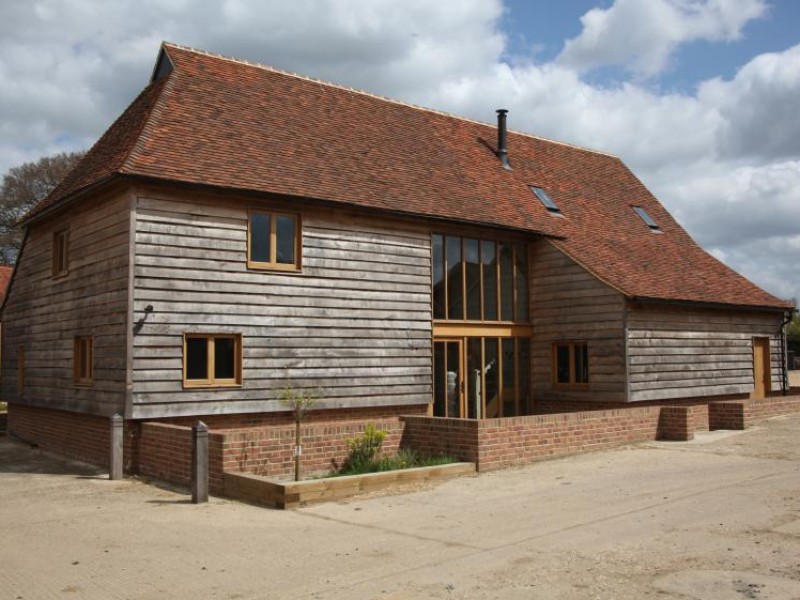
Planning
Although agricultural barns are now included within permitted development rights, there is often a question over how much of the work is conversion and how much is rebuild as a rebuild will require full planning permission. Under permitted development rights, prior notification must be made to the local council, and your proposals can be refused in much the same way a planning application is rejected. It is advisable to work with an architect experienced in this type of building who can guide you through the various obstacles such as conservation, listed building status, noise, contamination and whether or not the site is considered suitable to convert to a residential dwelling.
Building Regulations
Like any other building project, you will be required to comply with Building Regulations and if you use an experienced architect and go down the route of full planning, this should all be taken care of for you. However if you go down the route of permitted development rights, you may be required to use a Building Notice; whereby the Local Authority will send in inspectors during the build and aspects of your design may have to change as the project progresses in order to comply with building regulations. It is advisable to use a specialist contractor for barn conversions as such a professional with much experience will enable the design to progress within the allowance of the regulations.
Be Prepared for the Unknown
Assuming a detailed survey has been carried out, you will have a good indication of the amount of work that is to be undertaken and the potential problems and costs involved. However, with many of these buildings that were not built for domestic purposes, you must be prepared for potential problems that will only be uncovered as the build progresses. Sometimes these can be expensive so ensure you have a contingency fund.
Patience
In order to get the most out of your conversion, patience and attention to detail are key. Many of the buildings will not be connected to any mains utilities and getting water and electricity to agricultural locations can be a costly and long-winded affair. Similarly, most planning permission will require a sympathetic approach to the conversion, sourcing like for like materials to the originals and using reclaimed materials if possible. All of this will result in a superior finish to the final project, but will take time and effort to achieve. Once finished, a barn conversion will provide you with a wonderful, light and spacious family home.

Structural Warranty
Generally, there is a smaller marketplace for Barn Conversions, most insurers consider this to be a higher risk than a traditional build, some declining to quote on this type of risk.
The best time to source a structural warranty on a barn conversion is prior to works starting, whilst retrospective cover is achievable, this is also seen as a higher risk and as such reflected within the premium making it more costly.
To assist you to achieve a structural warranty quotation we have listed the information required below:
- Value of existing structure prior to conversion
- Build contract value for new works
- Gross Development Value on Completion
- The Site Plan – showing the site as a whole and its location.
- Existing Plans and Elevations – or photos of the existing structure from all angles both internal and external
- Proposed Plans and Elevations
- Structural Report – detailing the suitability for conversion from a qualified structural engineer or building surveyor
- Supporting information surrounding the Method and material for Waterproof Envelope, Tanking, Damp Proof course or membrane
- Ground Investigation Report including soil strength tests and contamination test
Once you have collated the information above you are ready to progress a quotation.
As one of the leading specialists, Granite Building Warranties deal with these types of enquiries/policies on a regular basis, enabling us to source suitable cover for your country retreat. We are here to help with any questions you may have.
For further information please contact Ed or Kelly on Tel: 01284 365345 or email ed@granitebw.co.uk / kelly@granitebw.co.uk.
Loft Conversions – A Popular Way To Create More Space
From This:
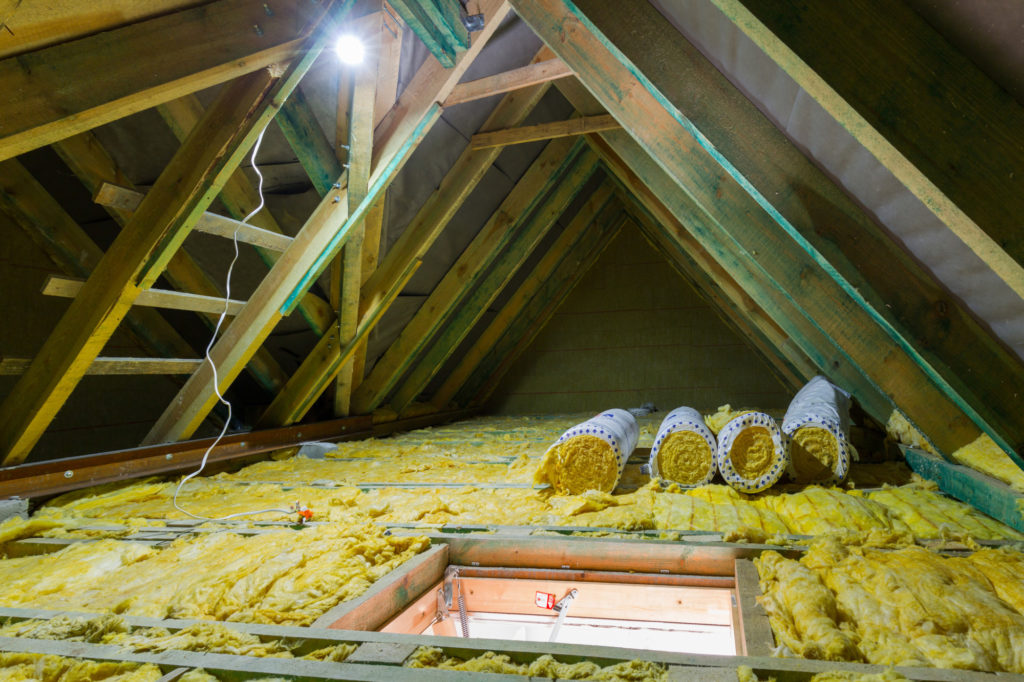
To This:
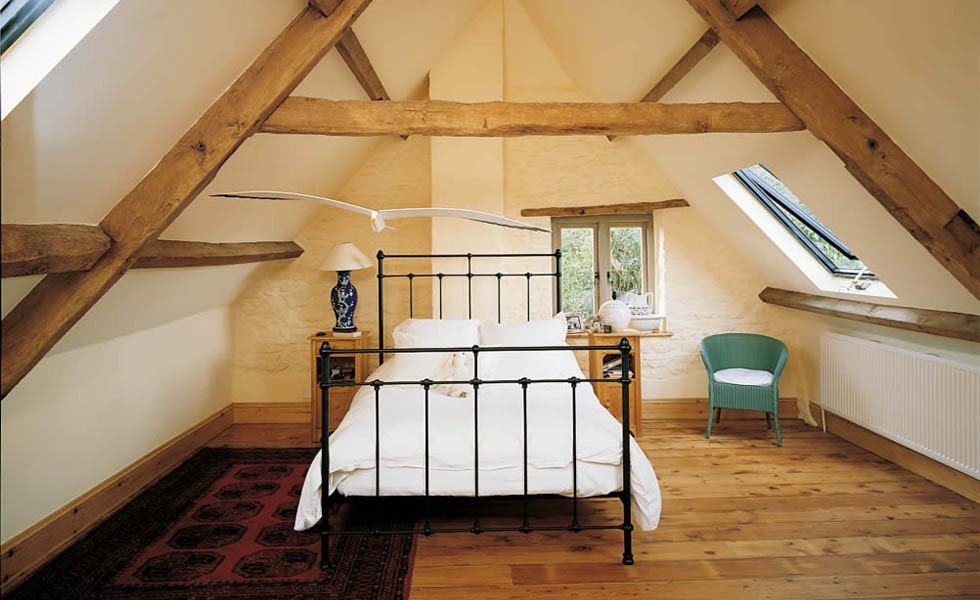
It has been estimated that an additional bedroom and bathroom can add up to 10 – 20% in value to an average sized family home and this can be achievable within the loft space.
 |
Things to consider when undertaking a loft conversion:
|
Basement Developments – Making The Most of The Ground Beneath Your Feet
With land in short supply, especially in cities, particularly London, developers and home owners continue to look for alternative ways to create further living space, and converting existing cellars to habitable space or creating entirely new basements is a convenient solution. According to analysis by the Halifax the increase in planning applications for basement development went up by 183% between January 2012 and December 2016.
This is further compounded by research carried out by Direct Line which shows an increase of 9% in basement applications in the UK between 2013 and 2015 of which the vast majority (75%) are in London. The demand has been so high that in some boroughs, such as Kensington & Chelsea or Pimlico, you are now no longer able to undertake basement conversions.

Legislation & Building Regulation Requirements
There is a lot of additional legislation and building regulation requirements to comply with when constructing or developing a basement – overall design and engineering issues, party wall issues, rights of light and ground water problems, tree root protection, biodiversity, sustainable drainage and amounts of daylight available in habitable accommodation are just a few. It is also vital you select the right contractor who has good PI cover and plenty of experience in basements.
Impact on Neighbours
You also need to consider the impact of such a development on neighbours, as basements and lofts cause real divides amongst neighbours. High profile cases include Led Zeppelin guitarist Jimmy Page who has been in dispute with pop star Robbie Williams over Williams’ plans to create a two-storey basement beneath his home in Kensgington.
Jon Hunt, (Foxton’s Estate Agency) has had objections from the French Embassy over his plans to build a multi-storey basement in his Kensington home and the jailed fraudster Achilleas Kallakis left his neighbours with a giant hole in the ground after his Grade II listed townhouse was seized mid-way through an enormous basement construction.
Additional Considerations
Additional considerations include: highway and parking problems, dust, noise and vibration disturbance and planners often require developers to sign up to a Considerate Construction Scheme.
The table below, provided by The Basement Information Centre (TBIC), is a useful tool in summarising the requirements & benefits for different types of basements.
| Type of Basement | Description | Details | Benefits | Comments |
| Refurbishment | Alterations to existing space below ground. | May require lowering the floor to increase head room; underpinning adjacent walls; improving ventilation and lighting. Typically involves improvements to, or new, waterproofing system; and new finishes and fixtures. | – Adds value and desirability of property. – Additional usable space. – Addresses potential existing damp problems. – Provides opportunities for new activities in property e.g. games room/gym/storage. |
Building regulations approval will be required for any works. Planning permission may be required, depending on extent of works and extended use. |
| New Garden Basement | New basement adjacent to existing property, usually in a garden space. | New structure below ground, with planted green roof or terrace at garden level. Access from main house via new external covered staircase. | – Adds value and desirability of property. – Additional usable space. – Provides opportunities for new activities in property. – Potential for natural daylight and ventilation through roof lights. |
Planning and building regulations approval required. Likelihood of need for structural support to existing house is reduced as distance from the house increases. |
| New Basement Under New Housing | Basement space built as part of a new build development. | Arrangements of windows and internal and external access vary. Designed to suit current and future use requirements, site conditions, cost, and constructability. | – Adds value and desirability of property. – Future adaptability. – Usable space for sustainable technologies and recycling. – Potentially reduces footprint of house. – Increases thermal performance. |
No additional building or planning regulation requirements, provided it is included in the initial application. |
| Retrofit | New space created through excavation below ground floor of an existing property. | Allows creation of additional space below business or homes, which benefit from staying in the same location. Preservation of existing building possible (e.g. listed building). Underpinning works required. | – Adds value to property. – Additional space for business to develop in same location or family to expand. – Releases potential of empty property. |
Planning and building regulations approval required. Specialist work. Generally only economically viable for high land value properties. |
| Deep Basements | Spaces that are below one storey deep. | Frequently used for car parking, plant services space, and storage below larger residential development and other uses including commercial, retail, or mixed use schemes in urban areas. | – Building footprint and development potential optimised above ground. – Parking and space for deliveries possible. |
Refer to The Concrete Centre guide ‘Concrete Basements’ |
Although a large number of the basements being developed (especially in London) are for the luxury end of the market, creating high-end living spaces, leisure areas and multi level car parking, there is an increasing trend for home owners to use the money that it would cost to move, to improve an existing space.
 What can I use my Basement for?
What can I use my Basement for?
The choice, of course, is yours and you probably already have a very specific purpose in mind for your basement conversion. However, for those that are looking for inspiration here are some of the more common uses:
- Bedroom
- Bathroom
- Shower room
- Playroom
- Home Gym
- Home Office
- Games Room
- Entertainment/media room
- Study
- Home recording studio
A guide to finishing the basement.
Navigating Planning Permission for Basement Conversions
Typically, converting an existing basement or cellar into a living space, classified as a ‘change of use’, doesn’t necessitate planning permission. However, constructing a new basement, significantly enlarging one, or altering the property’s external appearance (for instance, by adding a light well) does require planning permission, according to the Government’s planning portal.
Lowering the floor of a cellar to increase its height might also need planning permission. However, small-scale extensions and modifications usually fall under Permitted Development Rights. For listed buildings, consent is generally required for internal and external alterations.
It’s prudent to obtain written confirmation from your local planning office that the work can proceed without planning permission. This is valuable documentation when selling the property, demonstrating compliance with planning requirements.
Adhering to Building Regulations for Basement Conversions
Transforming a basement into a habitable room mandates compliance with Building Regulations, focusing on safety and energy efficiency. These regulations encompass fire escape routes, ventilation, ceiling height, damp proofing, electrical installations, and water supply. The Basement Information Centre provides comprehensive guidelines on these standards.
However, renovating an existing livable basement or repairing a cellar without changing its use does not fall under these regulations.
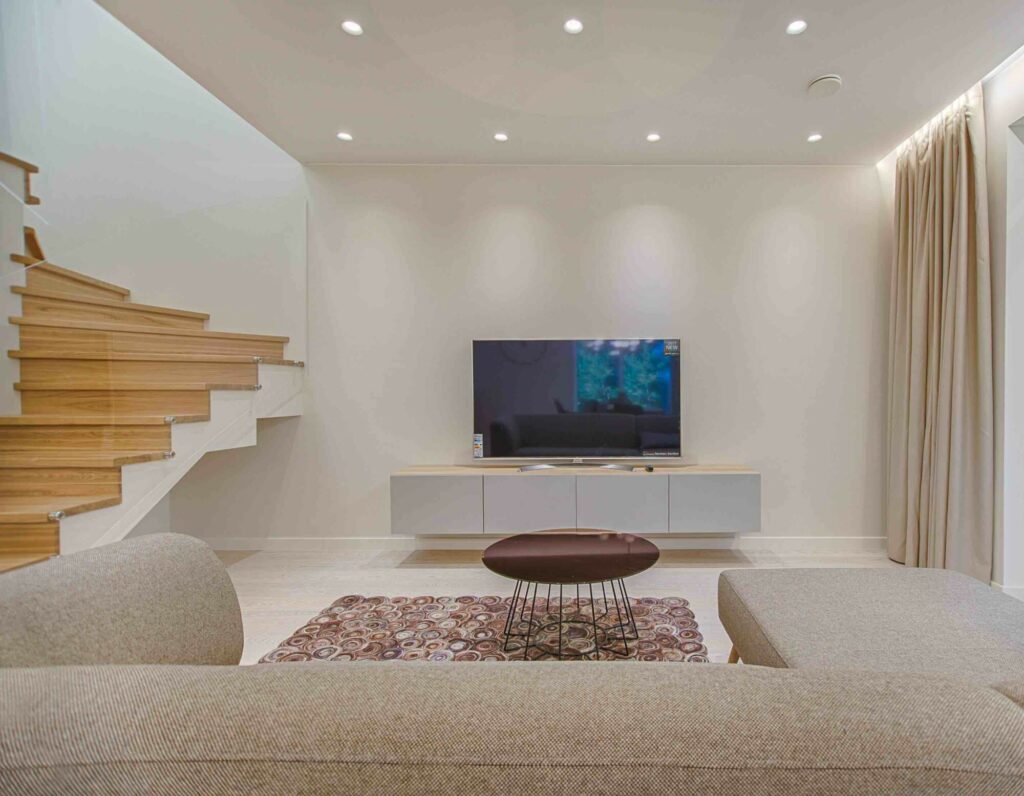 Fire Safety Considerations in Basement Spaces
Fire Safety Considerations in Basement Spaces
Building Regulations emphasise fire safety, particularly regarding escape routes in basements. The regulations stipulate the necessity of a viable escape route in case of fire. This could be an external door or window of specific dimensions (refer to the Basements for Dwellings Document) or a protected stairway leading to an exit.
Further information on fire safety regulations specific to basements can be found in relevant safety guidelines.
Dealing with Party Walls During Basement Conversions
If your property shares walls with neighbouring buildings, the Party Wall Act 1996 becomes relevant. This requires informing the owners and leaseholders of adjoining properties about the conversion. A Party Wall Agreement, which might cost around £700 per neighbour, is often necessary in these cases.
Basement Flooding
How can my basement flood?
If you are experiencing damp in your basement, it can be difficult to pinpoint the source of the water. Without knowing the cause, it makes you vulnerable to flooding. Low-lying areas are more at risk, especially those below the flood plane.
The following are the more common causes of basement flooding:
1) Groundwater – a simple process where rainfall makes the ground damp that then leads to a damp basement wall
2) Surface flooding – from a heavy storm or overland flooding
3) Burst water pipes – water from faulty or damaged pipes
4) A high water table – areas with a high water table are prone to flooding
5) Poor landscaping – if soil slopes down to the house rather than sloping away from the house for the first ten feet as it should
6) Poor quality concrete floors – cracks or faults in the flooring
7) Issues with a draining system including problems with a sump pump
More on basement waterproofing to prevent flooding
More inspiration on what your basement conversion could look like.
For further information please contact Ed or Kelly on Tel: 01284 365345 or email ed@granitebw.co.uk / kelly@granitebw.co.uk.
Copyright © 2024 Granite Building Warranties
Supported by Fox 360 Ltd
Granite Building Warranties Ltd is an Appointed Representative of Richdale Brokers & Financial Services Ltd which is authorised and regulated by the Financial Conduct Authority.
Granite Building Warranties is a company registered in England and Wales (Company Number 11497543) with its registered office at 1st Floor, 5 Century Court, Tolpits Lane, Watford, WD18 9PX
